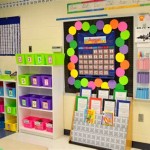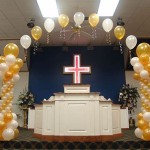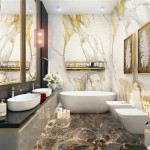Interior Decoration: Defining the Art of Enhancing Interior Spaces
Interior decoration is a multifaceted discipline focused on enhancing the aesthetic appeal and functionality of interior spaces. It encompasses a wide range of techniques and considerations, aiming to create environments that are both visually pleasing and conducive to the intended purpose. Unlike interior design, which often involves structural alterations and architectural planning, interior decoration primarily deals with the surface treatment and furnishing of existing spaces.
The core objective of interior decoration is to transform a space into a reflection of the occupants' personality, lifestyle, or the branding of a business. This is achieved through careful selection and arrangement of decorative elements like furniture, paint, wallpaper, fabrics, lighting, accessories, and artwork. The process involves understanding the principles of design, such as balance, harmony, proportion, and rhythm, and applying them to create a cohesive and visually engaging environment. Effective interior decoration takes into account the existing architecture, natural light, and spatial constraints to maximize the potential of the space.
Interior decoration is not merely about choosing pretty things. It's a deliberate process requiring careful planning, execution, and an understanding of the impact of different elements on the overall ambience. A successful interior decoration project elevates the functionality and comfort of a space, making it more inviting, productive, or relaxing, depending on the intended use. It considers human factors, such as ergonomics and psychology, to create spaces that are not only aesthetically pleasing but also contribute to the well-being of the occupants.
Key Point 1: The Distinction Between Interior Decoration and Interior Design
It is crucial to differentiate between interior decoration and interior design. While both disciplines deal with the enhancement of interior spaces, their scope and approach differ significantly. Interior design is a more comprehensive field that involves the planning and design of interior spaces, including structural alterations, space planning, and compliance with building codes. Interior designers often work with architects and contractors to create functional and safe environments. They may specify layouts, materials, and fixtures, and oversee the construction process.
Interior decoration, on the other hand, focuses on the aesthetic enhancement of existing spaces. It involves selecting and arranging decorative elements to create a desired mood or style. Interior decorators typically do not undertake structural changes or deal with building codes. Their primary focus is on the surface treatment and furnishing of the space. While an interior designer might specify the location and type of lighting fixtures, an interior decorator would choose the style and finish of those fixtures to complement the overall design scheme.
Think of it this way: interior design is about the bones of a space, while interior decoration is about the clothes. One focuses on the fundamental structure and functionality, while the other focuses on the aesthetic appeal and personalization. In many projects, both interior designers and interior decorators collaborate to achieve the best results, leveraging their respective expertise to create spaces that are both functional and visually stunning. A qualified interior designer often possesses the skills of an interior decorator, but the reverse is not always true.
Key Point 2: The Elements of Interior Decoration
Several key elements contribute to successful interior decoration. These elements, when carefully considered and combined, create a harmonious and visually appealing space.
Color: Color plays a crucial role in interior decoration, influencing the mood and perception of a space. Different colors evoke different emotions and can affect the perceived size and shape of a room. The selection of a color palette is a fundamental step in the decoration process. Interior decorators consider factors such as the amount of natural light, the size of the room, and the desired ambience when choosing colors for walls, furniture, and accessories. Color palettes can be monochromatic (using different shades of a single color), analogous (using colors that are adjacent to each other on the color wheel), or complementary (using colors that are opposite each other on the color wheel).
Lighting: Lighting is another essential element, affecting both the functionality and the ambience of a space. Interior decorators consider different types of lighting, including ambient lighting (providing overall illumination), task lighting (providing focused light for specific activities), and accent lighting (highlighting specific features). The placement and type of lighting fixtures are carefully considered to create the desired effect. Natural light is also a crucial factor, and interior decorators often work to maximize its impact through the strategic placement of furniture and window treatments.
Furniture: The selection and arrangement of furniture are central to interior decoration. Furniture should be both functional and aesthetically pleasing, complementing the overall design scheme. Interior decorators consider factors such as scale, proportion, and style when choosing furniture. The arrangement of furniture affects the flow of the space and can influence how people interact within it. A well-planned furniture layout maximizes space and creates a comfortable and inviting environment.
Fabrics and Textiles: Fabrics and textiles add texture, warmth, and visual interest to a space. They are used in upholstery, curtains, rugs, and other decorative elements. Interior decorators consider factors such as color, pattern, and texture when selecting fabrics. The choice of fabric can significantly impact the overall feel of a room. For example, luxurious fabrics like velvet and silk can create a sense of opulence, while natural fabrics like linen and cotton can create a more relaxed and casual atmosphere.
Accessories and Art: Accessories and art add personality and character to a space. They can include decorative objects, plants, artwork, and personal collections. Interior decorators carefully select accessories that complement the overall design scheme and reflect the occupants' style. The placement of accessories is crucial, as they can be used to create focal points and add visual interest. Art can be a powerful element in interior decoration, adding color, texture, and personality to a room.
Key Point 3: The Process of Interior Decoration
The process of interior decoration typically involves several stages, from initial consultation to final installation. A structured approach ensures a successful and satisfying outcome.
Initial Consultation: The process begins with an initial consultation between the interior decorator and the client. During this meeting, the interior decorator gathers information about the client's needs, preferences, and budget. The client's lifestyle, personal style, and the intended use of the space are discussed. The interior decorator also assesses the existing conditions of the space, including its size, layout, and existing features. This initial consultation is crucial for establishing a clear understanding of the project goals and setting realistic expectations.
Conceptual Design: Based on the information gathered during the initial consultation, the interior decorator develops a conceptual design. This typically involves creating mood boards, sketches, and floor plans to illustrate the proposed design scheme. The conceptual design outlines the overall style, color palette, and furniture layout. It also includes preliminary selections of fabrics, finishes, and accessories. The conceptual design is presented to the client for review and feedback. Revisions are made based on the client's input until a final design concept is approved.
Detailed Design and Sourcing: Once the conceptual design is approved, the interior decorator develops a detailed design that includes specific selections of furniture, fabrics, lighting fixtures, and accessories. This stage involves sourcing materials and products from various vendors. The interior decorator prepares detailed specifications and cost estimates for all items. The client reviews and approves the detailed design and budget before proceeding to the next stage.
Implementation and Installation: The implementation phase involves coordinating the procurement and delivery of all selected items. The interior decorator oversees the installation of furniture, lighting, window treatments, and other decorative elements. This stage may involve working with contractors, such as painters, electricians, and installers. The interior decorator ensures that all work is completed according to the design specifications and within the agreed-upon timeframe.
Final Styling and Reveal: The final stage involves styling the space and adding the finishing touches. This includes arranging accessories, hanging artwork, and ensuring that everything is in its proper place. The completed project is then revealed to the client. The interior decorator reviews the finished space with the client to ensure their satisfaction. Any necessary adjustments or corrections are made at this time.
In conclusion, interior decoration is a multifaceted process that goes beyond simply choosing aesthetically pleasing items. It encompasses a deep understanding of design principles, careful planning, and meticulous execution. By understanding the distinction between interior decoration and interior design, appreciating the elements of interior decoration, and following a structured process, anyone can create interior spaces that are both beautiful and functional.

Interior Decorating And Design Styles Differences Types Lesson Transcript Study Com

What Is An Interior Architect Newschool

Interior Decorating And Design Styles Differences Types Lesson Transcript Study Com

The Definition Of Design Inspiration

Urban Modern Interior Design Defined Everything To Know Décor Aid

Traditional Interior Design Defined And How To Master It Décor Aid

Interior Decoration Ihmnotessite

What Is Interior Design All You Need To Know Domestika

Contemporary Vs Modern Interior Design Everything To Know Décor Aid

What Is A Good Interior Design Archdaily







